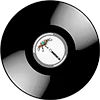
Ambient — a genre without beats or words, but with powerful atmosphere. All about ambient: history, subgenres, playlists, fun facts, and why it’s worth listening to.
Ambient is more than just a genre. It’s a sound environment you immerse yourself in. No strong beat, no vocals, no verses or choruses — but an atmosphere that can carry you into another dimension. It’s music that’s perfect for meditation, sleep, reflection and focused work.
The history of ambient: from Brian Eno to outer space
The genre we now call ambient (literally “surrounding”) took shape in the 1970s thanks to legendary British musician Brian Eno. After spending time in hospital and listening to a barely audible piano outside his window, he formulated a concept: music that doesn’t demand your full attention, but creates a mood like light or scent.
His album “Ambient 1: Music for Airports” (1978) became the manifesto of the genre and is still considered a benchmark.
Key features of the ambient sound
-
Slow tempo or no tempo at all
-
Long, atmospheric tones and textures
-
Repetitive harmonies and gentle layers
-
Frequent use of reverb, delay and field recordings
-
Tracks can last for tens of minutes with no obvious changes — and that’s where their power lies
Why ambient is popular again
-
Background music for work and concentration
-
Sound therapy and meditation
-
“Eco” soundscapes (tracks with rain, forest, wind and nature sounds)
-
Use in films, games and VR as an immersive backdrop
-
The rise of “lo-fi / ambient beats to relax to” streams
Ambient subgenres
-
Dark Ambient — tense, ominous soundscapes (Lustmord, Raison d’être)
-
Space Ambient — cosmic pads and synths (Carbon Based Lifeforms, Stellardrone)
-
Ambient Techno — soft beats wrapped in atmosphere (Biosphere, The Field)
-
Drone Ambient — long, static, evolving textures
-
New Age — lighter ambient with ethnic instruments
What to listen to
-
Brian Eno – An Ending (Ascent)
-
Stars of the Lid – Requiem for Dying Mothers
-
Aphex Twin – Rhubarb
-
Stellardrone – Billions and Billions
-
Biosphere – Substrata
-
Loscil – First Narrows
Fun facts
-
Ambient is often used in therapy for anxiety, insomnia and depression
-
Some tracks are made entirely from nature sounds recorded in high definition
-
Ambient pieces have been played on the ISS and in NASA videos
-
In Japan, ambient music is often played in temples, hotels and shops to create a sense of harmony
Ambient is the new silence
In a world of noise and chaos, ambient is like musical oxygen. You can let it play in the background, use it as a sonic meditation, or turn it on to recharge your energy. It doesn’t demand your attention, but if you dive into it, whole sonic worlds open up.

